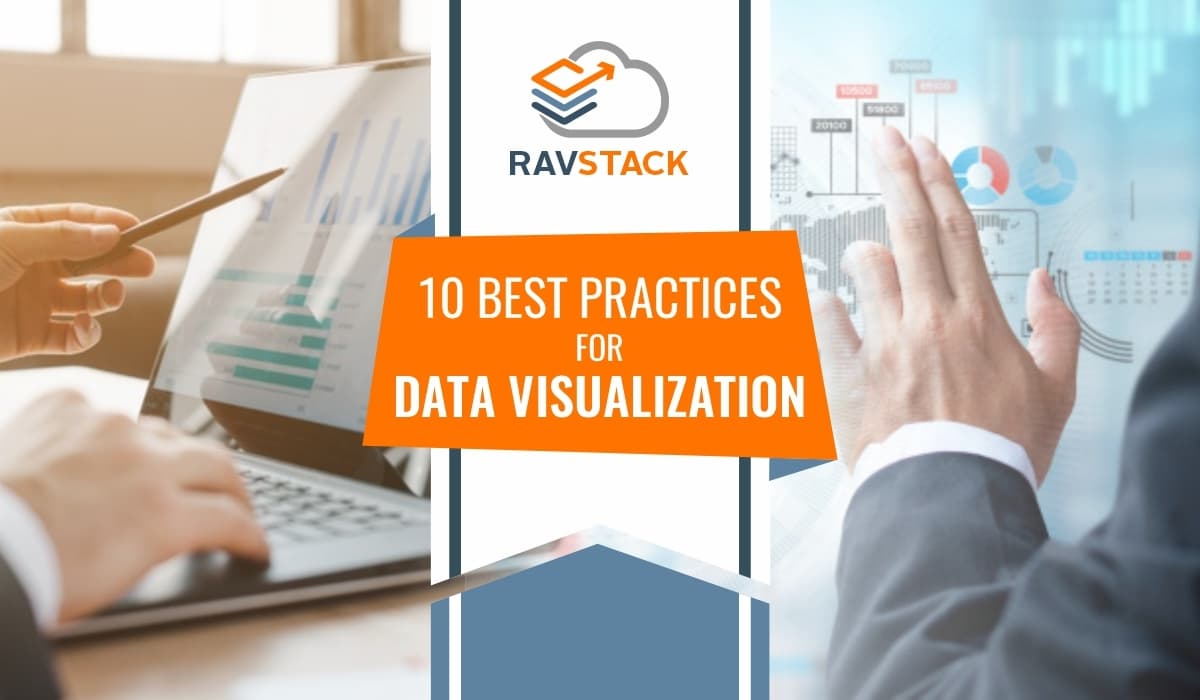
 September 30, 2020
September 30, 2020
 6 mins read
6 mins read
The untapped market of startup consulting
The startup ecosystem is not only about hiring skilled professionals and marketing those skills in front of the world; it […]
 Insights
Insights
 Data Visualization, Startups
Data Visualization, Startups
 July 29, 2020
July 29, 2020
 9 mins read
9 mins read

“A for Apple,” while reading this, we all must have started visualizing an apple in our brain. This is how every human mind works; we comprehend most of the data by visualizing it. As kids, we are taught by showing images because our brain processes visuals of any data 60,000 times faster than the text.
And with the explosion of data everywhere, data visualization is the emerging technology that helps IT industries and several other verticals in computing and grasping the data easily, aiding in faster decision making and finding the right patterns.
With this post, let’s have a sneak-peek into data visualization practices that will help in leveraging the strengths of human visual systems for displaying data for enhancing the user’s experience of viewing data.
Table of content
Michael Friendly defines data visualization “as information which has been abstracted in some schematic form, including attributes or variables for the units of information.”
Let’s simplify this for better understanding; data visualization refers to disseminating volumes of information and representing it in the form of images or figures to communicate, read and explore the data for coherent and better understanding.
Therefore, depending on the attributes present, data is illustrated using graphs, plots, charts, and maps.
With the world experiencing exponential growth in data, it is becoming difficult for the human brain to comprehend the information and make conclusive decisions based on it.
In addition to this, IBM says that 2.5 quintillion bytes of data are generated daily, making data visualization more critical than ever.
Penning down a list of facts for you to better understand the use and importance of data visualization –
Therefore, this makes data visualization imperative for comprehending and consuming big data in a useful way. Validating this, some recent surveys also suggest that when simple paragraphs or raw information represent scientific claims, 68% of people tend to believe it, but the credibility rises to 97% if graphs or charts represent the data.
Hence, with emerging trends, data visualization plays a critical role in various verticals like science, technology, economics, human services, and healthcare as it can be effortlessly covert complex datasets into understandable data.
Before getting started with data visualization, let’s have a detailed look into the best data visualization practices, which are essential to understand and adhere to for dealing with complex and complicated data.
Start your data visualization project by defining the underlying purpose and priorities. When you have a clear purpose, you ensure that it appropriately answers all the vital strategic questions, helps solve real problems, and provides real value. Your project implementation should be target-focused and include the necessary visuals.
If your data visuals successfully track performance, monitor customer behavior, or measure the effectiveness of the process, you are all set to leave a mark with your project. That was an instant tip worth remembering.
What good can show the data visuals depicting the IT sector’s performance does to the medical industry? This question must be self-explanatory to make you understand the next practice; we are going to discuss it.
Yes, you guessed it right. We are talking about knowing your audience before kickstarting the data visualization project. If the data visualization does not communicate with the audience, it is useless and a waste of time
So, it is imperative to target the right audience where graphs and charts are of actual use and are compatible with increasing the audience’s expertise.
You can induce several visual elements into your project, but that would be like the “jack of all and ace of none situation.” Therefore to ace in your project, choosing the right feature is the key.
For making the right choice, you must be thorough with your data type and what it should convey. You can use pie charts, bar graphs, tables, maps, line-graphs or whichever is more suitable.
Content marketers look for snackable content, and data visualization is best at doing so. The displays and dashboards, which are digestible and straightforward, put a maximum impact on the client.
Therefore try to simplify your boards by using the appropriate type for your dashboard, which can be strategic, analytical, or operational. When you make the right choice, it helps your visualization designers make fair use of white space and data hierarchy, depicting the context crystal clear.
Also, it helps the audience to
Implementing the data visualizations rightly requires the right tool. Try to choose the tool that helps you enhance and support attractivity, interactivity, and allows you to share data resources and dashboards. Some of the standard but great tools are:
Human brain responses to colors even quicker than figures and illustrations. So including colors in your graphs and predictive patterns will help you grab user’s attention faster than others. Strategically induce the use of colors into your data visuals. Please keep it simple but attractive.
Use the highlighting colors to enhance the impact of particular data. Also, the color clubbing in representing the data plays a crucial role in helping the viewer to comprehend the information faster and promptly.
As per the recent surveys, mobile traffic solidified its lead in the total internet website traffic with a total of 52.2%. With such high numbers, we cannot have the audacity to exclude the practices that enhance the experience of mobile users.
So, implement the strategies that enhance the mobile experience and discard the ones that pose challenges to this path. For instance: using the bitmap image formats like JPG and PNG can deteriorate the mobile user’s experience.
Instant Tip: The tiny data points and subtle encodings act as the cherry on the cake for data visualizations. So, make sure they don’t get lost due to the small screen of mobiles.
Try to be user or client-centric while designing your data visualization dashboard. Engagement of your customer depends on how well the dashboard is interacting with the. All such interactions include the correct usage of fonts, colors, displaying order of data, and inclusion of all other elements.
Consistency is a critical element in increasing user engagement and helping them comprehend the data faster and efficiently.
Gaining keyhole business insights is critically essential in the voyage of achieving goals. It helps you to get onto the right track for accomplishing the needs of the customers. You are always backed with the knowledge of the latest trends, products, tricks, and turns in the businesses.
It helps you in keeping a leg above your competitors by identifying the problems even before they tend to arise.
Someone has rightly said,” Excess of anything is wrong”. Adding too many features or unnecessary colors act like distortions in data visualizations. Being precise and straightforward is the key to grab a user’s attention and convert him to a potential client.
The inclusion of unnecessary elements or graphics to visuals may end misleading the human brain from the actual context of the visual.
So, try to be specific and simple to avoid distortions in data.
Human thinking is complicated, so we must induce every good practice in our data visualization technique that makes it easier for viewers to process it. With the emerging use of data visualization practices, the businesses are inclining towards creating a data-driven culture providing employees access to BI capabilities.
Helping you take your business forward, RavStack is one of its kind online platforms providing the pro data visualization consulting services. Our data visualization designers and content creators have mastered every skill to induce the best practices in your project.
We are determined to meet every client’s end goals as per their requirements and help them generate the best visualization projects that aim to comprehend and simplify the data at a glance. Our work speaks volumes about us. So, if you still have doubts, then have a quick conversation with RavStack.
)
We'll get back to you within 24 hours
Talk to our expertDigital Newsletter about iOS, Android, AI, Big Data and Cloud Insights.